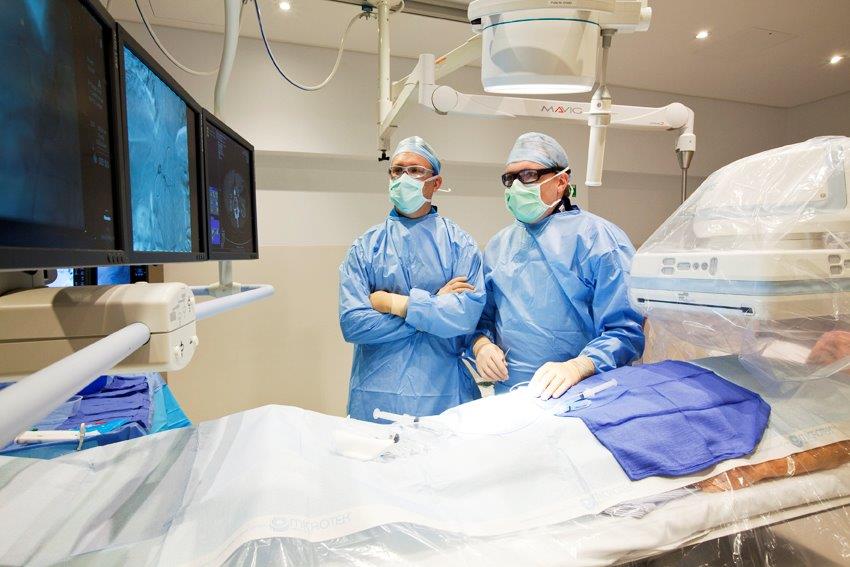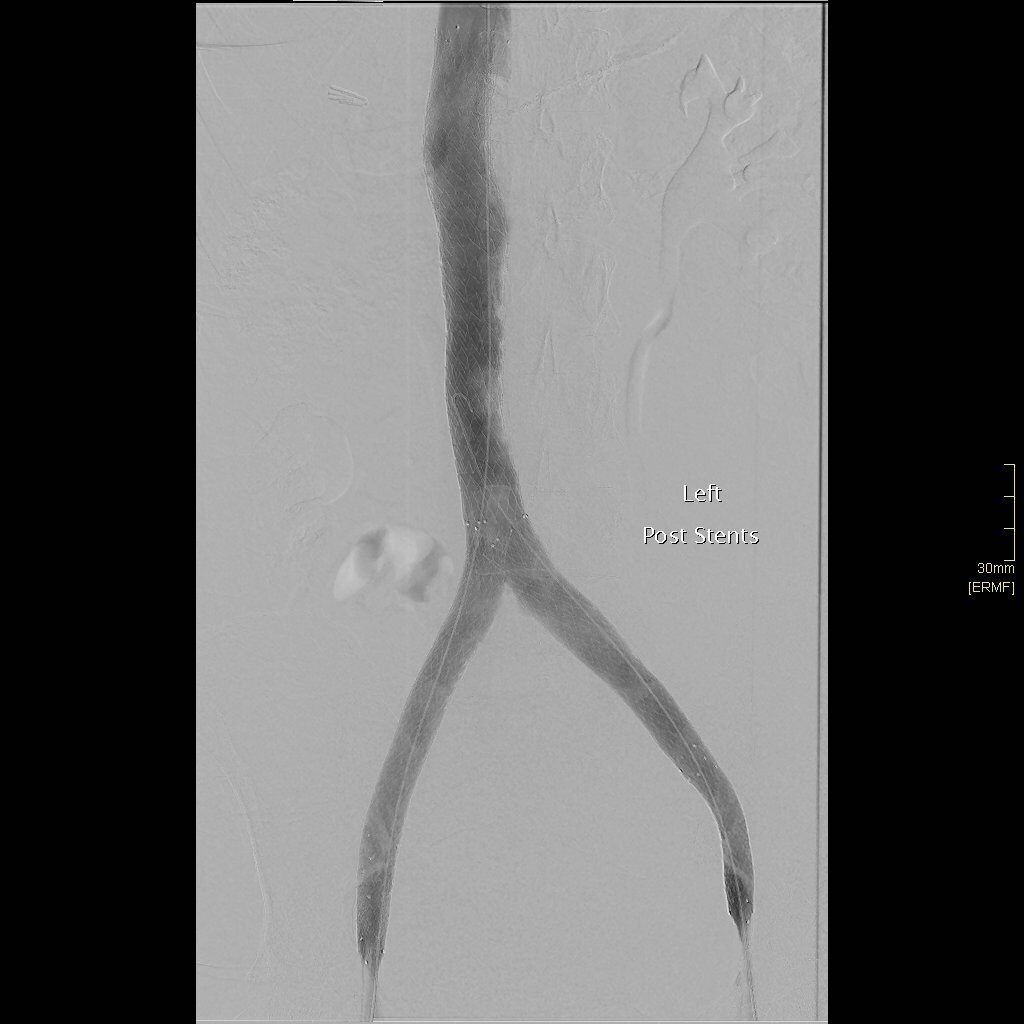
What is Venous stenting for chronic DVT?
Deep vein thrombosis (DVT) can result in chronic blockage of veins in the abdomen, pelvis and legs. This can lead to chronic high blood pressure in the veins (venous hypertension) of the legs, causing swelling, pain, heaviness and ulceration. Venous stenting can be performed to open up (and keep open) these veins.

Why perform Venous stenting for chronic DVT?
This operation is done to restore normal venous blood flow in the pelvis and relieve the symptoms of chronic venous hypertension.

How does Venous stenting for chronic DVT work?
Venous stenting is usually done under general anaesthetic in an operating room with specialised medical imaging equipment. You may be either laying on your back or front for this operation. Your interventional radiologist will use an ultrasound to guide a small tube into the vein in the leg or at the base of the neck. X-ray dye (contrast) is injected to outline the venous anatomy. A fine wire is then passed through the blocked segment of vein after which a balloon catheter is passed over the wire and inflated temporarily to stretch open the vein. The balloon is then deflated and removed, and a stent (metal mesh tube) is deployed in the vein to keep it open.
You will normally need to be on blood thinners for 6-12 months after this procedure.
Contact Us
appointments:
For appointment requests, please phone 0497 052 070. For general enquiries, please complete the contact form and a member of the VIRQ team will respond shortly.
Address:
Suite 20, 3 Doherty Street, Birtinya, QLD, 4575, Australia
Email:
Phone:
For all appointments and enquiries, please phone:
Our office is attended Monday - Friday from 9am - 5.30pm.
